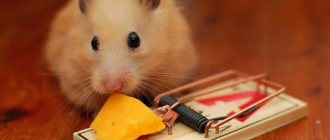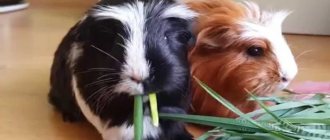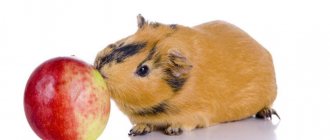Spaying or neutering your pet rat is common practice among dedicated and loving rat owners. On the one hand, the procedure offers many benefits for your pet rat, especially female rats. However, as with most surgical procedures, there are risks that need to be considered before subjecting your beloved pet rat to the stress of surgery and recovery.
Before performing an invasive procedure on your rat, take the time to learn about the pros and cons of neutering rats and how to care for your rat before and after surgery.
Indications
Castration of rats can be carried out to treat or prevent diseases of the reproductive system, correct the behavior of sexually mature animals and prevent the appearance of unwanted offspring.
Medical indications
One of the main reasons for removing reproductive organs in rats is for medical reasons. This is due to the fact that rats are susceptible to cancer. Among the diseases diagnosed in adulthood, the most common neoplasms in females are neoplasms of the mammary glands (MGN), uterus and ovaries, and in males - malignant tumors of the testes.
Increased susceptibility to diseases of the reproductive system is one of the arguments for using castration of rats as the most effective way to prevent oncology. Performing the operation at a young age will allow the rat to recover much faster and minimize the likelihood of developing many dangerous pathologies of the reproductive organs in the future. Neutering female rats significantly reduces the risk of developing pituitary tumors.
Clear indications for the procedure are diagnosing diseases in rats that can only be treated by surgical removal of the testes and appendages (with or without the uterus).
Hyperaggression of males
Rats tend to form family or territorial groups, so keeping solitary animals is considered unnatural for these rodents. The coexistence of several animals is associated with problems of a different kind: after puberty, conflicts arise between same-sex rats (mainly males), which often result in serious injuries. Often in sexually mature males, hyperaggression also occurs towards the owner.
Castration of rats makes it possible to correct their behavior. Castrated males can coexist quite peacefully in the same cage.
Keeping different-sex individuals
When listing the main reasons for castration of rats, we should specifically focus on the high fertility of these rodents. Pregnancy in a rat lasts only three weeks, and each litter can have from 5 to 20 cubs (depending on the species). Almost immediately after giving birth, the female is ready for mating again. Unlike their outdoor relatives, ornamental rodents are ready to reproduce throughout the year.
Uncontrolled reproduction has an adverse effect on the condition of the rat: frequent childbirth depletes its body, significantly shortening its lifespan. Another problem arises related to the need to accommodate numerous offspring.
If you plan to keep rats of different sexes, the best solution would be to pre-castrate the males or sterilize the females. Castrated males can be kept together with females without the risk of having numerous offspring.
Should male pet rats be neutered?
Some rat owners decide to have their male rats neutered. There are several good reasons why you might want to spay your male rat.
The first reason is the male’s excessive aggression towards other rats. If your male rats are too aggressive towards each other, you may want to consider neutering them. However, take a few things into account.
If you neuter one male rat, you must neuter all of them. After all, if you castrate only one male rat, the lack of testosterone may cause other male rats to think that the spayed rat is a female. So make your decision based on whether to neuter all of your rats, not just one.
One more thing to consider. Rare fights between males are normal. Many rat owners have the philosophy that if there is no blood, then everything is fine when it comes to their fights. But if your rats seriously look like they have problems with each other - constant aggressive behavior, frequent fighting, bloodletting - then you may want to consider neutering them.
If your rats really have a problem with each other, things can get dangerous and one can kill the other. However, keep in mind that this is very rare, and it is much more likely that your rats are just playing fighting.
Another reason for spaying and neutering is that owners want to keep male and female rats together. Most rat owners will only have boy rats or just girl rats. If they have both, they will always keep them separate. Or, if they let them stay together, they'll be prepared to have a ton of new rat babies.
But if you want to keep male and female rats together and don't want to raise baby rats, you really need to spay the male rats and neuter the female rats. Otherwise you will soon have a lot of baby rats.
Contraindications
Castration of rats is associated with certain risks for the animal. It is not recommended to perform the procedure on individuals older than 1 year, since the body’s response to anesthesia worsens with age. Limitations include some comorbidities. A ratologist, a veterinary specialist who treats rodents, will help eliminate possible contraindications. You can make a decision to castrate a rat after a preliminary examination by a specialist.
An operation in the presence of contraindications is possible when the obvious risks from the identified disease exceed the risk of possible complications during the intervention.
Keeping decorative rats - feeding
All animals need water. Your rat should always have a drinking bowl with fresh, clean water. It is better to use a sippy cup than a bowl, which can tip over or become dirty. Hang the drinker on the outside of the cage with the tip of the drinker on the inside. The water needs to be changed daily. The spout of the drinker should be washed weekly.
It is wrong to feed rats only seeds; your animal will lack vitamins and minerals. Pet stores have a large selection of balanced food for rodents. The food is placed in a clay bowl or hanging feeder. The bowl needs to be washed daily. Rats may avoid unfamiliar foods, so introduce them to the new food gradually (1-2 weeks). If you want to pamper your rats, you can use fresh fruits and vegetables as treats. To prevent digestive upsets, give them in limited quantities and avoid gas-producing vegetables such as broccoli or cauliflower.
Rats, like humans, sometimes eat out of boredom, which can lead to obesity. Do not put too much food in the bowl. To keep the rats busy, you can hide a few raisins in hay or a roll of paper towel. You can give treats purchased at a pet store, but it is better to limit the amount to overweight rats.
Optimal age
There is no consensus regarding the timing of castration. Most veterinarians believe that the optimal age for a rat is 3 to 4 months. By this point, all organs of the genitourinary system have already been formed, and the growth and development of the rodent has stopped. At the same time, at this age the rat is still young enough to tolerate anesthesia and surgery well, and also to recover quickly in the postoperative period.
Some experts believe that it is possible to operate on a rat almost immediately after puberty, which usually occurs by 40-50 days of life. A specialist will help you correctly determine the recommended age for castration of a particular individual after examining the rodent.
Points for and against
There are constant discussions around the issue of castration of rats between opponents of the operation and those who consider its implementation necessary and justified. The main argument against sterilization is the rat's short lifespan. Many people believe that an animal that will live only 2-3 years should not be subjected to a rather dangerous operation. In addition, uncontrolled behavior and the appearance of strong-smelling discharge at certain periods are not so pronounced in rats, which reduces the motivation for surgical intervention. Another reason for disapproving of castration of rodents is that they do not tolerate the effects of painkillers. In some cases, animals do not recover from general anesthesia after the procedure is completed. This problem has recently become less acute due to the advent of safer inhalation anesthesia.
Intervention is advocated by many veterinarians, breeders and nursery owners who are constantly faced with the need to treat adult animals for various pathologies. Castration is especially important for females, in whom the production of sex hormones very often causes pituitary tumors and rapidly growing neoplasms of the mammary glands. Neutering rats is also the most effective way to control your pet's reproduction.
Before making a decision, it is necessary not only to weigh all the arguments for and against, but also to evaluate the conditions in which the rat will live: whether it will be kept alone or in a group, with individuals of what sex it will be in the same cage, etc.
pros
The positive consequences of castrating a rat include reducing the risk of developing dangerous pathologies and increasing its life expectancy. After the procedure, it is possible for both same-sex and opposite-sex individuals to live together without negative consequences.
Minuses
Removal of the reproductive organs does not have the same effect on the rat as on other animals. Many owners are interested in the question: does castration lead to obesity, and will the pet become less active? Removing the testes or ovaries will not cause weight gain or cause drastic changes in behavior other than eliminating episodes of aggression.
The disadvantages of castration are the anesthetic risk and the cost of the intervention, comparable to performing the same manipulations on a cat or dog.
Preoperative preparation for sterilization and castration of rats
If your pet rat is prone to respiratory illness, your veterinarian may prescribe antibiotics for a few days before surgery. This will ensure that the animal is healthy enough to undergo surgery and will reduce the risk of infection after the procedure.
Unlike cats and dogs, your pet rat does not need to fast before surgery. Rats cannot vomit or regurgitate, so there is no risk of accidentally inhaling regurgitated food or stomach acid while under anesthesia.
Fasting can be dangerous because it reduces energy reserves and makes rats more susceptible to dehydration and hypoglycemia. In some cases, fasting can be dangerous because it can alter the rat's response to the anesthetic.
Inhalational anesthetic is safer than injection in rats because the dose is easier to measure. If your veterinarian does not use an inhalational anesthetic, do not proceed with the surgery.
Complexity of the operation
The technique for removing testes or appendages in a rat is similar to performing the same procedure on other animals. The differences relate to certain surgical nuances: the doctor must know the characteristics of the rodent body and have experience in performing operations with small surgical access and the need to suture thin tissues of internal organs.
The difficulty of castration also lies in the fact that due to the small weight of rats, it is difficult to select the dose of anesthesia, and many drugs intended for intravenous administration are not recommended for use at all.
Anesthesia
Castration of rats is almost always carried out under general anesthesia. The use of local anesthesia is recommended only in cases where general anesthesia is contraindicated due to the health of the rat. Care after surgery largely depends on the type of anesthesia.
Injectable
This method involves intramuscular administration of the drug. The injection method is considered the most dangerous for two reasons:
- due to the impossibility of monitoring the animal’s condition and adjusting the depth of anesthesia after administration of the drug;
- due to the high toxicity of most painkillers.
At the same time, there is an opinion that intramuscular anesthesia, which lasts for several hours after surgery, reduces the pain of the rat and alleviates its postoperative condition.
Inhalation anesthesia
The supply of anesthetic in the form of gas through a mask makes it possible to minimize all possible risks and negative consequences of anesthesia. The amount of the drug entering the lungs can be controlled, and there is no negative effect on the liver and other internal organs.
Inhalation anesthesia is a more expensive method of pain relief, as it requires special equipment and expensive drugs.
To the tail vein
During the operation, anesthesia can also be given to the rat through the tail vein. This method is the most optimal in terms of cost and safety for the animal.
Advantages and disadvantages
Castration of rats has positive and negative sides and can be carried out at the request of the owner, except in cases where the operation was prescribed for medical reasons.
Among the advantages, the following should be noted:
- the possibility of keeping opposite-sex couples in the same cage;
- prevention of many deadly diseases;
- increasing the lifespan of a pet;
- possible reduction in animal aggression;
- improving the appearance of the rodent due to the normalization of the functioning of the sebaceous glands.
We recommend learning how to properly bathe a rat at home.
Therefore, the number of positive effects is large.
However, they face disadvantages such as:
- the need to carefully monitor your pet’s diet due to metabolic disorders;
- the inability to accurately predict the complete decrease in the animal’s aggressiveness;
- poor tolerance of painkillers and anesthesia by rodents.
The last point is the most unpleasant: due to the small size of decorative rats, it is very easy to make mistakes in medication dosages. It is for this reason that you cannot contact an untested and inexperienced veterinarian to castrate an animal. An error in the amount and strength of anesthesia can cause death.
Postoperative period
The doctor who will castrate the rat will tell you in detail about how long the rehabilitation period lasts and how to care for a castrated rodent. Typically, care after castration includes monitoring the animal's condition and proper feeding.
Recovery from anesthesia
The greatest attention after the end of the procedure requires the animal to recover from anesthesia. If necessary, the rat should be placed on a heating pad and covered to maintain body temperature. The animal should be placed on its side to prevent the tongue from sinking. The litter must be clean and must be changed as soon as it gets dirty.
How long it takes for a rat to recover from anesthesia depends on the type of anesthesia and the state of the body. After inhalation anesthesia, the rodent comes to its senses within 10-20 minutes. When using injection anesthesia, recovery from anesthesia may take several hours. During this period, it is necessary to ensure constant supervision of the pet.
Feeding
You can feed the rat immediately after regaining coordination of movements. On the first day, it is necessary to limit the amount of food to ½ the daily ration. In the absence of complications, nutrition in the following days is carried out as usual.
For 2-3 days, you should constantly keep an eye on the rat: inspect the sutures, monitor appetite, diuresis and defecation.
Postoperative care of rats
If no complications arise, the rat should be sent home the same day. This will reduce stress levels and make the recovery process easier for your pet rat. A reputable veterinarian will show you what the incision looks like and note any warning signs.
While the rat is recovering, it should be kept in a small cage separate from other rats for at least one full day. A cat carrier works well for this purpose as it is more confined and limits unnecessary movement.
It is important to keep the rat warm during and after surgery because the anesthetic interferes with body temperature regulation. You can keep your rat warm by using a covered heating pad, but you will need to be careful that the rat does not overheat and try to chew it.
Your veterinarian may prescribe antibiotics and pain relievers to reduce the risk of infection and help your rat feel more comfortable. It is important to follow the instructions carefully and complete the full course of antibiotic treatment unless otherwise directed.
Check the incision regularly for signs of infection such as redness, pus, and swelling.
After 24 hours, the neutered female rats can be reintroduced to their cage mates, but you must ensure that no one tries to disturb the incision. After 7-10 days, your female rat should be well enough to run, climb, and play with her cage mates.
Male rats may take up to 3 weeks to fully recover. It may take 6 to 8 weeks for aggressive behavior to change.
Complications
Castration of rats is associated with the risk of developing surgical and postoperative complications. Incorrect calculation of the dose of anesthetic can cause death or disruption of the functioning of internal organs, primarily the kidneys.
Complications after castration of rats can be caused by wound infection or self-removal of sutures. The penetration of infection is indicated by redness and swelling of the skin around the incision, and the appearance of purulent discharge. In case of any deviations from the normal state, it is necessary to show the rat to a veterinarian as soon as possible.
Complications after spaying and castrating rats
In addition to signs of infection, you need to check your rat for the following complications:
- Sudden bleeding.
- Reopening the incision site.
- Abnormal breathing.
- Excessive lethargy.
- Lack of appetite, thirst.
- Postoperative abscesses.
Complications resulting from spaying or neutering can range from mild (minor infection) to severe (respiratory or heart failure). Therefore, it is extremely important to keep a close eye on your pet rat and seek immediate veterinary help if necessary.
To avoid complications, follow these recommendations:
- Make sure your veterinarian is experienced in spaying and neutering rats.
- Ask all important questions in advance.
- Avoid surgery if the risks outweigh the benefits (older age, prone to infections, etc.)
- Check the rat for complications.











